- Home
- John Milton
Complete Poetry and Selected Prose of John Milton
Complete Poetry and Selected Prose of John Milton Read online
John T. Shawcross received a Ph.D. from New York University and is now professor of English at the University of Kentucky. He is also the author of With Mortal Voice: The Creation of Paradise Lost, John Milton: A Bibliography for the Years 1624-1700, and Paradise Regain’d: “Worthy T’Have Not Remain’d So Long Unsung”.
AN ANCHOR BOOK
PUBLISHED BY DOUBLEDAY a division of Bantam Doubleday Dell Publishing Group, Inc. 1540 Broadway, New York, New York 10036
ANCHOR BOOKS, DOUBLEDAY, and the portrayal of an anchor are trademarks of Doubleday, a division of Bantam Doubleday Dell Publishing Group, Inc.
This edition has been especially prepared for Anchor Books and has never appeared before in book form.
A Penguin Random House Company
eBook ISBN: 978-0-307-82376-2
Trade Paperback ISBN: 978-0-385-02351-1
Library of Congress Cataloging-in-Publication Data
Milton, John, 1608-1674.
[Poems]
The complete poetry of John Milton: arranged in chronological order with an introduction, notes, variants, and literal translations of the foreign language forms by John T. Shawcross.—Rev. ed.
p. cm.
Includes bibliographical references.
I. Shawcross, John T. II. Title.
PR3551.S4 1990 89-77299
821′. 4—dc20 CIP
ISBN 0-385-02351-0
Copyright © 1963, 1971 by Doubleday, a division of Bantam Doubleday Dell Publishing Group, Inc.
ALL RIGHTS RESERVED
v3.1
Introduction to the Revised Edition
Arranged according to probable date of composition of the verse, this revised edition brings together all original poems and poetic paraphrases written by John Milton. Included therefore are nine poems not published in either of the two collected editions of the minor poems appearing in Milton’s lifetime: two verses found with his Commonplace Book, a third poem on Hobson the university carrier possibly by Milton, four sonnets, and two Latin epigrams from two prose works. Poems written in Latin, Greek, and Italian are given in original versions and in new prose translations, which attempt insofar as possible to follow the original lines. Differences from the first edition of this collection include the addition of the foreign language texts and the texts of Psalms 80–88, additional notes, a general updating of materials, and some rearrangement of the poems.
I have attempted to narrow the dates of composition as much as is presently possible; when apparent proof of date is missing a question mark is added. But the reader should bear in mind that such dating is open to question and it may be in dispute by scholars. Full discussion of dating will be found in the textual notes. Milton frequently altered poems after he had recorded them in the earliest versions which have survived, but perhaps only Arcades, A Mask, Samson Agonistes, Paradise Regain’d, and Paradise Lost underwent extensive revisions. Dates for such development are indicated and the poems placed in this arrangement accordingly. Paradise Regain’d has been positioned after Paradise Lost because the received text is apparently an extensive transformation into epic form of whatever was its early version. Samson Agonistes has been rearranged in this revised edition, not because I have altered my belief concerning its date of composition, but because its former position isolated some of the minor poems from others, creating a frankly odd arrangement. It is perhaps best to place the three major poems together, and the standard placement of Samson Agonistes last allows one to contrast it effectively with Paradise Regain’d in interpretation and form. The dating of the three major poems is, in any case, particularly uncertain and has been frequently challenged.
Explanatory notes present information necessary to an understanding of the poetry for the student and general reader and, hopefully, readings suggestive of structure, biographical contexts, sources of importance, and import for Milton. No attempt has been made to present a history of ideas, a frequent approach to a study of Milton. Textual principles are explained in the introduction to the textual notes. Generally, the basic text is that which seems to be closest to Milton—holograph, then scribal copy, and so forth. Alterations from the basic text are few; and all verbal variants in known significant texts are recorded in the textual notes. All dates for years are given in new style. Milton’s prose works are cited from first editions.
The advice and knowledge of Professors J. Max Patrick and William B. Hunter, Jr., have been pervasively instructive in both large matters and small. But the decisions underlying the texts and commentary—and thus the faults—are my own. I am indebted also to William R. Parker for a number of suggestions.
Biographical Table
1608
Born (Dec. 9), Bread St., Cheapside, London.
1618 ?–1620 ?
Tutored by Thomas Young.
1620 ?–1624
At St. Paul’s School, London, under Alexander Gill. C. 1623 or 1624 family moved to home in St. Martin’s-in-the-Fields, Westminster (?).
1625–1632 July
At Christ’s College, Cambridge, ostensibly to enter clerical life. Plague closed Cambridge from Apr. 17, 1630, to c. Jan. 1631. C. 1631 family moved to home in Hammersmith.
1625
Admitted to Christ’s College (Feb. 12), from which he matriculated on Apr. 9.
1626
Period of rustication (Lent term through spring vacation).
1629
Bachelor’s degree conferred (Mar. 26).
1632
Master’s degree conferred (July 3).
1632 July–1635 ?
At Hammersmith with parents. “A Mask” (“Comus”) performed, Sept. 29, 1634.
1635 ?–1638
At Horton, Bucks, with family. Frequently in London after death of mother, Apr. 3, 1637. Publications: A Mask (1637/8 ?); “Lycidas” in Justa Edovardo King naufrago (1638).
1638 Apr. ?–1639 Aug. ?
Continental tour to France and Italy.
1639 autumn–1648
Tutoring until c. 1647. Studies continued; prose and poetic writings, some published and others begun. Residence: St. Bride’s Churchyard (a few months) and Aldersgate St., London (1640–Sept. ? 1645).
1641
Publications: “Postscript” (?) in Smectymnuus, An Answer to a Booke entituled, An Humble Remonstrance (Mar.); Of Reformation (May ?); Of Prelatical Episcopacy (July ?); Animadversions upon the Remonstrants Defence, against Smectymnuus (July).
1642
Publications: The Reason of Church Government (Feb. ?); An Apology against a Pamphlet call’d A Modest Confutation (Apr.). Married to Mary Powell (May ?), who soon returned to her family’s home in Forest Hill (July ?).
1643
Father came to live with Milton (Apr.). Publication: The Doctrine and Discipline of Divorce (Ed. 1, c. Aug.).
1644
Publications: Doctrine and Discipline (Ed. 2, enlarged, Feb.); Of Education (June); The Judgement of Martin Bucer (Aug.); Areopagitica (Nov.). Sight began noticeably to fail (autumn ?).
1645
Publications: Tetrachordon and Colasterion (Mar.); Poems (Ed. 1, autumn ?). Wife Mary returned home (summer ?). Residence: Barbican (Sept. ?–autumn 1647).
1646
Daughter Anne born (July 29).
1647
Father died (Mar. 13 ?). Residence: High Holborn (autumn–c. Mar. 1649).
1648
Daughter Mary born (Oct. 25).
1649–1660 ?
Period of public service as Secretary for Foreign Tongues to Council of State: appointed Mar. 15, 1649; continued in position until at least Oct. 22, 1659.
1649
Publi
cations: The Tenure of Kings and Magistrates (Ed. 1, Feb.); Observations upon the Articles of Peace (May); Eikonoklastes (Ed. 1, Oct., in answer to Eikon Basilike, c. Feb.). Residence: Charing Cross (c. Mar.–Nov.) and Scotland Yard, Whitehall (Nov.–Dec. 1651).
1650
Publications: Tenure (Ed. 2, enlarged, Feb.); Eikonoklastes (Ed. 2, enlarged). Probably lost sight of left eye.
1651
Publication: Joannis MiltonI Angli Pro Populo Anglicano Defensio (Feb., in answer to Salmasius’ Defensio regia pro Carolo I, which appeared in England by Nov. ? 1649; revision of so-called “Defensio prima” was published in Oct. 1658. Also Joannis Philippi Angli Responsio Ad Apologiam Anonymi, by the younger surviving son of Milton’s sister Anne, published toward end of year in answer to John Rowland’s Pro Rege et Populo Anglicano Apologia written against “Defensio prima.”) Son John born (Mar. 16). Became totally blind before Feb. 1652, and granted assistance in secretaryship. Residence: Petty France, Westminster (Dec.–Sept. ? 1660).
1652
Daughter Deborah born (May 2); wife Mary died (May 5 ?); and son John died (June 16 ?). Work on poetry and prose (?) through 1658.
1654
Publication: Joannis MiltonI Angli Pro Populo Anglicano Defensio Secunda (May, in answer to Pierre du Moulin’s Regii Sanguinis Clamor, Aug. ? 1652, which attacked the Commonwealth).
1655
Publication: Joannis MiltonI Angli pro se Defensio (Aug., in answer to Alexander More’s Fides Publica, Oct. ? 1654).
1656
Married to Katherine Woodcock (Nov. 12).
1657
Daughter Katherine born (Oct. 19).
1658
Second wife, Katherine, died (Feb. 3); daughter Katherine died (Mar. 17). Publication: edited “Sir Walter Ralegh’s” The Cabinet-Council (May ?).
1659
Publications and other writings: A Treatise of Civil Power (Feb.); Considerations Touching the likeliest means to remove Hirelings (Aug.); A Letter to a Friend, Concerning the Ruptures of the Commonwealth (written Oct. 20, first published by John Toland in 1698); possible work, “Proposalls of certaine expedients for the preventing of a civill war now feard, & the settling of a firme government” (autumn ?, first published in Columbia Milton).
1660
Period of transition between governments, loss of office, and governmental harassment and imprisonment. Publications and other writings: The Readie & Easie Way to Establish A Free Commonwealth (Mar.; Ed. 2, revised, c. Apr.); The Present Means, and brief Delineation of a Free Commonwealth (“Letter to General Monk,” written after Mar. 3, first published by John Toland in 1698); Brief Notes Upon a Late Sermon (Apr.). Residence: Holborn near Red Lyon Fields (Sept. ?–early 1661). Escaped death penalty under Act of Oblivion of Aug. 29; in prison, after burning of books written by him (Oct. ?–Dec. 15).
1661-1674
Period of general retirement; work on poetry and prose.
1661
Residence: Jewin St. (early 1661–1669 ?).
1663
Married to third wife, Elizabeth Minshull (Feb. 24).
1665
Stayed at Chalfont St Giles, Bucks, to escape plague (June ?–Feb. ? 1666).
1667
Publication: Paradise Lost (Ed. 1, Aug. ?; further issues, 1668, 1669).
1669
Publication: Accedence Commenc’t Grammar (June ?). Residence: Artillery Walk, Bunhill Fields (c. 1669-74).
1670
Publication: The History of Britain (before Nov.).
1671
Publication: Paradise Regain’d and Samson Agonistes (early in year).
1672
Publication: Joannis Miltoni Angli, Artis Logicæ Plenior Institutio (May ?).
1673
Publications: Of True Religion, Hæresie, Schism, Toleration (May ?); Poems (Ed. 2, enlarged, together with Of Education, Ed. 2, Nov. ?).
1674
Publications: Joannis Miltoni Angli, Epistolarum Familiarium Liber Unus (with college prolusions, May); Paradise Lost (Ed. 2, revised, July); A Declaration, or Letters Patents (July ?). Died, apparently of gout (Nov. 8 ?); buried in St. Giles, Cripplegate (Nov. 12).
Posthumous publications: Literæ Pseudo-Senatûs Anglicani (Oct. ? 1676; a free and inaccurate English version appeared in 1682); Mr. John Miltons Character of the Long Parliament (Apr. ? 1681); A Brief History of Moscovia (Feb. ? 1682); Letters of State (translated by Edward Phillips, with four sonnets and a biographical memoir, 1694); Joannis Miltoni Angli De Doctrina Christiana (1825; translated and published in same year by Charles R. Sumner).
Abbreviations
The following abbreviations, in addition to those which are commonplace, those which are standard for books of the Bible, and those which are easily recognizable short forms, will be found in this edition:
Aen. Aeneid
Ec. Virgil, Eclogues
El. Elegy
FQ Faerie Queene
HLQ Huntington Library Quarterly
Meta. Ovid, Metamorphoses
MLN Modern Language Notes
MLR Modern Language Review
NQ Notes and Queries
Od. Odyssey
PL Paradise Lost
PMLA Publications of the Modern Language Association
PQ Philological Quarterly
PR Paradise Regain’d
Ps. Psalm
Rep. Plato, Republic
RES Review of English Studies
SA Samson Agonistes
SEL Studies in English Literature
Son. Sonnet
SP Studies in Philology
TLS Times Literary Supplement
TM Trinity Manuscript
UTQ University of Toronto Quarterly
Contents
INTRODUCTION TO THE REVISED EDITION
BIOGRAPHICAL TABLE
ABBREVIATIONS
1. POEMS WRITTEN DURING SCHOOL, COLLEGE, AND UNIVERSITY YEARS (1624-32)
A Paraphrase on Psalm 114
Psalm 136
Apologus de Rustico et Hero (The Fable of the Peasant and the Overlord)
Carmina Elegiaca (Elegiac Verses)
“Ignavus satrapam dedecet …” (“Slothful sleep …”)
Elegia prima (Elegy 1: To Charles Diodati)
Elegia secunda (Elegy 2: On the death of the Beadle of Cambridge University)
Elegia tertia (Elegy 3: On the death of the Bishop of Winchester)
In obitum Præsulis Eliensis (On the death of the Bishop of Ely)
In obitum Procancellarii medici (On the death of the Vice-Chancellor, a Physician)
In proditionem Bombardicam (On the Gunpowder Plot)
In eandem (On the same: “Thus did you strive …”)
In eandem (On the same: “James derided …”)
In eandem (On the same: “Whom impious Rome …”)
In inventorem Bombardæ (On the inventor of Gunpowder)
In quintum Novembris (On the fifth of November)
Elegia quarta (Elegy 4: To Thomas Young)
On the Death of a Fair Infant Dying of a Cough
At a Vacation Exercise
Elegia quinta (Elegy 5: On the coming of spring)
On the Morning of Christs Nativity
Elegia sexta (Elegy 6: To Charles Diodati, sojourning in the country)
The Passion
Elegia septima (Elegy 7: “Not yet did I know …”)
(Lines appended to Elegia septima)
Song: On May Morning
Sonnet 1: “O Nightingale, …”
Sonnet 2: “Charming lady, …”
Sonnet 3: “As on a rugged mountain …”
Canzone: “Scoffing, amorous maidens …”
Sonnet 4: “Diodati, and I will say it …”
Sonnet 5: “In truth your fair eyes, …”
Sonnet 6: “Young, gentle, and candid …”
On Shakespear
Naturam non pati senium (Nature does not suffer decay)
De Idea Platonica quemadmodum Aristotel
es intellexit (On the Platonic Idea as Aristotle understood it)
On the University Carrier
Another on the same
Hobsons Epitaph
An Epitaph on the Marchioness of Winchester
L’Allegro
Il Penseroso
2. POEMS WRITTEN DURING STUDIOUS RETIREMENT OR ASSOCIATED WITH THE EUROPEAN TRIP (1632-40)
Sonnet 7: “How soon hath Time …”
Arcades
A Mask (“Comus”)
Psalm 114
Philosophus ad regem … (A philosopher on his way …)
On Time
Upon the Circumcision
At a solemn Musick
Lycidas
Ad Patrem (To my Father)
Ad Salsillum poetam Romanum ægrotantem (To Salzilli, a Roman poet, being ill)
Mansus (Manso)
Ad Leonoram Romæ canentem (To Leonora singing in Rome)
Ad eandem (To the same: “Another Leonora captured …”)
Ad eandem (To the same: “Why, credulous Naples, …”)
Epitaphium Damonis (Damon’s Epitaph)
3. POEMS WRITTEN DURING PUBLIC LIFE AND GOVERNMENTAL SERVICE (1641-58)
Sonnet 8: “Captain or Colonel, …”
Sonnet 9: “Ladie, that in the prime …”
Sonnet 10: “Daughter to that good Earle, …”

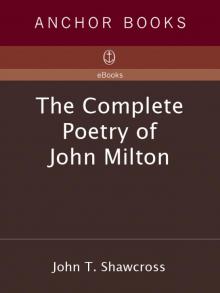 Complete Poetry and Selected Prose of John Milton
Complete Poetry and Selected Prose of John Milton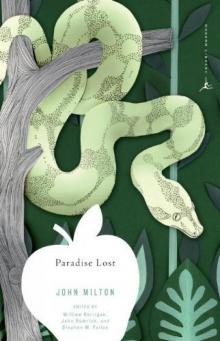 Paradise Lost
Paradise Lost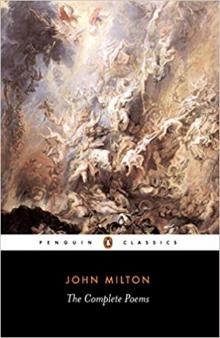 The Complete Poems (Penguin Classics)
The Complete Poems (Penguin Classics)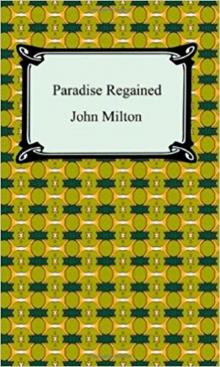 Paradise Regained
Paradise Regained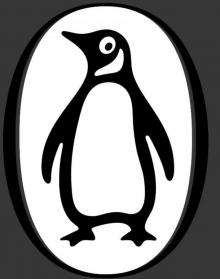 The Complete Poems
The Complete Poems The Complete Poetry of John Milton
The Complete Poetry of John Milton